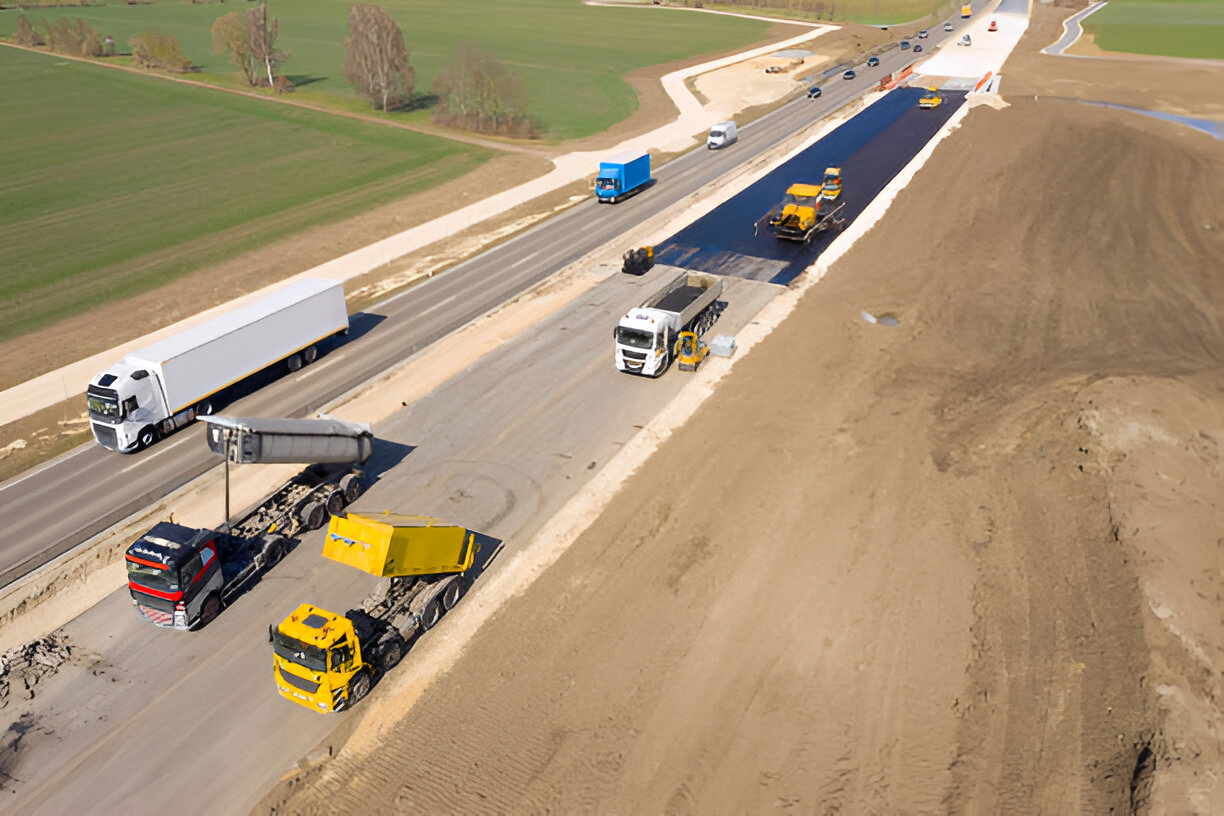Highways are the arteries of a nation, facilitating the movement of goods, services,
and people across vast distances. However, maintaining these crucial infrastructure
elements is an ongoing challenge that requires careful planning, timely execution,
and a commitment to safety and longevity. In this blog, we explore the importance of
effective highway maintenance and the best practices that ensure highways remain
safe and durable for years to come.
- The Importance of Highway Maintenance
Effective highway maintenance is critical for several reasons:
- Safety: Well-maintained highways reduce the risk of accidents by ensuring
smooth, skid-resistant surfaces and clear visibility of road markings. Regular
maintenance helps prevent hazardous conditions like potholes, cracks, and debris
accumulation. - Longevity: Proper maintenance extends the life of highway infrastructure, reducing
the need for costly and disruptive repairs. This ensures that highways can withstand
heavy traffic loads and environmental stressors over time. - Economic Efficiency: Investing in regular maintenance minimizes the need for
extensive repairs or complete overhauls, saving public funds and reducing the
economic impact of road closures and traffic disruptions.
- Key Components of Effective Highway Maintenance
Effective highway maintenance involves a combination of proactive measures and
timely interventions. Key components include:
- Pavement Management: Regular inspections and assessments of pavement
conditions are essential. Techniques like crack sealing, microsurfacing, and overlay
applications help preserve the pavement’s structural integrity and prevent minor
issues from escalating into major problems. - Drainage Systems: Proper drainage is crucial to prevent water accumulation on
highways, which can lead to pavement deterioration and hydroplaning hazards.
Regular maintenance of culverts, gutters, and drains ensures that water flows away
from the road surface efficiently. - Shoulder Maintenance: Highway shoulders provide critical support to the
pavement and serve as emergency pull-off areas. Regular grading, vegetation
control, and debris removal are necessary to maintain shoulder integrity and safety. - Signage and Markings: Clear and visible signage and road markings are essential
for safe navigation. Regular cleaning, repainting, and replacement of faded or
damaged signs ensure that drivers receive the necessary information to make safe
driving decisions. - Bridges and Overpasses: These structures require specialized maintenance to
ensure they remain safe and functional. Inspections, joint sealing, deck repairs, and
corrosion protection are key tasks in maintaining bridge and overpass integrity.
- Best Practices for Highway Maintenance
Adopting best practices is crucial for maintaining highways effectively:
- Regular Inspections: Scheduled inspections help identify potential issues early,
allowing for timely repairs before they become significant problems. Advanced
technologies like ground-penetrating radar and infrared thermography can enhance
the accuracy of inspections. - Preventive Maintenance: Preventive measures like sealing cracks, applying
protective coatings, and maintaining drainage systems are cost-effective strategies
that extend the life of highway infrastructure. - Use of Quality Materials: High-quality construction and repair materials ensure
durability and reduce the frequency of maintenance. Using materials that are
resistant to weathering, wear, and chemical exposure is particularly important for
highways. - Responsive Repair Strategies: When issues do arise, rapid response is key to
minimizing damage and ensuring safety. Quick repairs of potholes, cracks, and other
defects prevent further deterioration and reduce the risk of accidents. - Environmental Considerations: Sustainable practices, such as recycling asphalt
and using environmentally friendly materials, contribute to the long-term viability of
highway maintenance efforts while reducing environmental impact.
- Challenges in Highway Maintenance
Highway maintenance comes with its share of challenges, including:
- Budget Constraints: Limited funding often forces road authorities to prioritize
certain maintenance activities over others, which can lead to deferred maintenance
and increased repair costs down the line. - Traffic Management: Maintaining highways without causing significant traffic
disruptions is a constant challenge. Nighttime work, temporary lane closures, and
advanced planning are essential to minimize the impact on road users. - Weather Conditions: Extreme weather, such as heavy rain, snow, and heat, can
accelerate road wear and tear. Maintenance strategies must account for these
conditions to ensure the highway remains functional year-round.
Effective highway maintenance is vital for ensuring the safety and longevity of our
road networks. By adopting best practices, utilizing quality materials, and staying
proactive in identifying and addressing issues, we can maintain highways that meet
the demands of modern transportation. The result is a safer, more reliable
infrastructure that supports economic growth and enhances the quality of life for all
road users.

